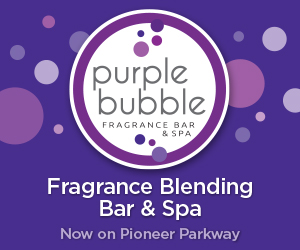Voices
You Can Find It Here
- Details
- Published on Tuesday, 01 November 2011 15:22
- Written by Paul Gordon
Retailers say there is little need to leave Peoria area to shop
It always sounds good and noble when communities start "buy local" campaigns aimed at boosting sales for their locally owned retailers.
Such campaigns have been seen in central Illinois for years, particularly in the communities surrounding Peoria. Some shopping centers, such as the Metro Centre and Junction City in Peoria, pride themselves on being occupied by almost all local retailers.
But do such campaigns really help? During the busiest shopping seasons of the year, including the holiday shopping season fast approaching, are these campaigns realistic?
First, there is evidence that "buy local" campaigns do help, according to the Institute for Local Self-Reliance. In each of the past four years, the organization said, a national survey of independent businesses found that those in communities with such campaigns "have experienced markedly stronger revenue growth" compared with companies in areas that don't have an ongoing campaign.
In 2010, the most recent survey showed, businesses in "buy local" communities had average sales growth of 5.6 percent, compared with 2.1 percent for the others. The survey was of 2,768 independent businesses, including retailers, service companies, restaurants and other small companies.
That survey, conducted after the 2010 holiday shopping season was completed, indicated the "buy local" initiative was a factor during that period between Thanksgiving and Christmas for independent retailers, who made up nearly half of all those surveyed. In fact, the survey showed, the gap was even larger: Independent retailers in "buy local" communities reported a 5.2 percent increase in holiday sales and those in communities without a campaign reported growth of 0.8 percent.
Further, among businesses that experienced revenue declines in 2010, those in communities without a "buy local" campaign experienced a larger decline than those in "buy local" towns.
Nearly half of the respondents in "buy local" communities said the campaign brought them new customers and 55 percent said it improved the loyalty of their existing customers.
"The survey's findings suggest that more people are aware of and seeking out independent businesses," the ILSR said. "Nearly two-thirds of respondents said that public awareness of the benefits of supporting locally owned businesses had increased in [2010], while 24 percent said it had stayed the same and only 3 percent said it had decreased."
Also, it said, far more people said it mattered to some or most of their customers that the business was locally owned and independent.
Stacy Mitchell, head of research for the ILSR, said campaigns that are not sustained long-term are not nearly as effective. Those that are, however, "they're the ones where it really happens. When local business alliances are formed by the independent business owners and they run the campaign, those are most effective. If it's started by an organization like a chamber of commerce, it has to make sure there is a lot of buy-in from the business community if it is going to work."
Mitchell said keeping a campaign going long-term is most effective "because there is a greater degree of visibility for the campaign and the businesses involved and there is the message being repeated over and over."
Mitchell said her organization looks for those types of established campaigns when it does annual surveys to check their effectiveness.
There is a noticeable effect on holiday shopping, as well, she said. That's partly because gift items are the types of things that can easily be purchased any place. "With gift items there seems to be a lot more leeway for going to the independent retailers," she said.
But another reason, Mitchell said, seems to be one surrounding community spirit. "At Christmas or the holiday season there always is more community spirit, more appeal to doing things to support your community. If buy-local campaigns send out that kind of message, it hits home for a lot more people during that season," she said.
That support includes the fact that dollars spent with local retailers stay in the community and are re-spent in the community, whereas large department stores based outside the community send their receipts to the corporate headquarters where it then gets redistributed. The percentage of sales to those stores that stay in the community – largely in the form of wages paid the employees – is much smaller, Mitchell said.
"When that kind of information is communicated, it makes a difference," Mitchell said.
There are few items a person could not find in Peoria, either at an independent retail store, a so-called big box store, a strip center or big mall, said Eric Binker, president of the Metro Centre, which boasts all locally owned independent stores or franchises among its 46 shops in the heart of Peoria.
"We don't think there really is any reason to have to go outside Peoria for anything, whether it's for holiday shopping or any time of year," he said. "Of course there are going to be exceptions, but they will be few," he said.
At Metro Centre a shopper can find shoes and clothes for any age group, food items and spirits (including restaurants), health and beauty items, services such as a travel agency, insurance and banking, and specialty stores that include unique gifts and artwork.
Brinker returned to Peoria from New York City to take over Metro Centre after its founder and his grandfather, Marvin Goodman, died in 2007. He stayed, he said, because he knew Peoria was a small, big city. "Anything you could possibly want you can find here, whether it's merchandise, entertainment or services. One of the things that drew me to Peoria is that you don't feel disconnected here," said Brinker, who is the son of former U.S. Ambassador Nancy Brinker and grew up in Dallas.
Les Morris, spokesman for Simon Property Group, the largest shopping center developer and owner in the country, agreed Peoria has a nice mix of independent and national retailers not typical for a metropolitan area of 350,000-plus. But it has some things even higher-profile cities don't have, he added.
"Take Jacksonville, Florida, for example. Bigger city, bigger profile, has an NFL team and hosted a Super Bowl. It doesn't have a Macy's store. But Peoria does, right there at Northwoods Mall," said Morris, whose employer owns Northwoods as well as Willow Knolls Plaza in Peoria. "There aren't many stores with a higher-profile name than Macy's."
Often "Buy Local" campaigns are started in small towns as an effort to get their residents to stay home, so to speak, to shop for what they need. Several central Illinois towns joined forces in the spring of 2010 in an initiative called We Are Retail Ready to let people know of the shopping and retail business opportunities available in the area about halfway between Chicago and St. Louis.
The effort was spearheaded in part by the Economic Development Council for Central Illinois and it put together profiles of the Peoria-area communities that have a good amount of retail, including Peoria Heights, East Peoria, Bartonville, Chillicothe, Washington, Morton and Pekin. Information on the demographics of the communities and the retail opportunities are included, as are maps. Profiles can be viewed at
www.centralillinois.org
Several communities combined that campaign with more local efforts, such as coupons provided by the local chambers of commerce to local retailers. Some chambers help underwrite "hot deals" for some of their retailers to get people into the shops to buy something at a discounted price.
Morton offers coupons and hot deals, said Jennifer Daly, executive director of both the Morton Chamber of Commerce and Economic Development Council. She also was one of the leaders of the We Are Retail Ready campaign.
The "I Shop Morton" intiative began about a year ago and includes coupons to local retailers and independent businesses given to community newcomers. A holiday coupon booklet is being prepared that will soon show up in the mailboxes of every Morton household. So far, Daly said, there hasn't been an effort to track the effectiveness of "I Shop Morton" because it takes time for people to use coupons. Tracking will be done soon, she said.
"These are things we feel are important because retail leakage hurts our independent businesses. But it takes communication, too. An awareness of the impact leakage can make may cause people to stop and think about going elsewhere to shop. A large part of any type of "Buy Local" campaign is awareness," she said.
Daly acknowledged there are items some people could not find in Morton and that they need to look elsewhere. She also is quick to say she understands some have their personal preferences on where they shop for clothes and other items.
"We're realistic, but we also know if there is a way to help our local businesses our residents should recognize what is available right here," she said.
Likewise, Roberta Parks, president of the Peoria Area Chamber of Commerce, said there is no point to demonize those who shop outside Peoria for some items, whether by choice or necessity.
"Everybody has their favorites and people are going to want to shop where they can get the full selection of merchandise a large department store offers but still want to find the unique gifts that a small, independent retailer is more likely to have. We're lucky here in that we have that kind of mix, which a lot of cities our size can't offer," she said.
Parks said a new initiative aimed more at business-to-business sales is in the planning stages at the EDC and area chambers of commerce. Called "Buy CI" and likely to launch soon after the holidays, the idea will be to get businesses that purchase products outside the local area bring 5 percent of that buying back into central Illinois.
Daly in Morton said the program is modeled after the "Buy Into the Circle" campaign in Des Moines that is paying dividends after a couple years. "Businesses there signed a pledge and they've been able to quantify what it means to that area. We have a study here that we believe will show the impact will be significant, just shifting 5 percent back to the area. Even if buying local costs a little more, the overall benefits to the area are significant," she said.
Bar Graph Legend
Black - with a "Buy Local" campaign.
White - without a "Buy Local" campaign.


















































